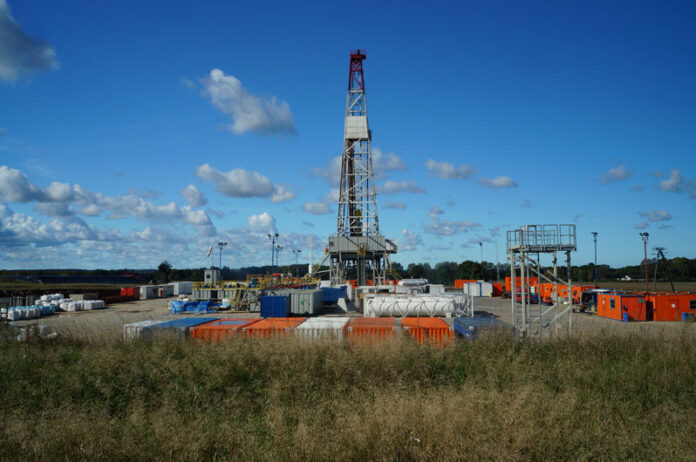The term ‘roughneck’ dates back to the early days of the oil industry and is believed to have originated in the United States. It was initially used to describe the manual laborers who worked on drilling rigs and were involved in the physically demanding and dirty work of drilling for oil.
These workers often had to deal with harsh working conditions, such as extreme temperatures, heavy equipment, and tough physical labor.
The name itself likely stems from the rough, tough, and challenging nature of the work that these men carried out on a daily basis.
What do roughnecks do on the oil rig?
Roughnecks work as part of a team on an oil rig and are responsible for a wide range of tasks. They play a crucial role in the drilling process and are responsible for connecting and disconnecting joints of drill pipe, controlling the drilling machinery, and monitoring drilling mud.
Another important aspect of a roughneck’s job is maintaining the drilling equipment and ensuring that it is in good working order.
This includes tasks such as cleaning, lubricating, and repairing machinery, as well as conducting regular inspections to identify potential issues before they become major problems.
Additionally, roughnecks play a crucial role in ensuring the safety of the rig and its crew by adhering to safety policies and practices. They must be aware of hazardous materials and potential dangers in their working environment, such as gas leaks, fires, and equipment failures.
Roughnecks are also responsible for maintaining a clean and organized work area, as this can reduce the risk of accidents and injuries.
Related: Working for Oil and Gas Operator vs Oilfield Service Company
How much do oil roughnecks make?
The salary of a roughneck can vary depending on factors such as experience, location, and the size of the oil rig. On average, roughnecks can expect to earn between $35,000 to $60,000 per year.
However, with overtime and bonuses, some roughnecks can make up to $100,000 or more annually.
It is important to note that working on an oil rig often involves long hours and time away from home, which can contribute to higher salaries in the industry.
For example, roughnecks working in remote locations, such as offshore oil platforms, may earn higher wages due to the isolated and challenging nature of their work environment.
How hard is it to be a roughneck?
Being a roughneck on an oil rig is a challenging job. The work is physically demanding, requiring strength, stamina, and the ability to work in difficult weather conditions.
Roughnecks often work long hours, sometimes 12-hour shifts, and may be away from home for weeks or even months at a time.
This can lead to a demanding and exhausting lifestyle, with limited opportunities for social and personal activities.
Rig crew members often form strong bonds with their colleagues, who share the same challenges and experiences, and this sense of teamwork can make the difficult working conditions more bearable.
How to become a roughneck?
Becoming a roughneck usually involves starting as an entry-level worker, known as a roustabout, and working your way up through the ranks. Many roughnecks begin their careers with no prior experience in the oil and gas industry, as on-the-job training is often provided.
A high school diploma or GED is typically required, and some employers may prefer candidates with additional training or relevant experience in the field, such as a background in construction or heavy machinery operation.
To succeed as a roughneck, you must be physically fit, able to work well under pressure, and have a strong work ethic.
You must also be willing to work long hours, often in challenging conditions, and be able to adapt to the unique demands of life on an oil rig.
Related: Working In the Oilfield | Requirements, Entry Level Jobs and Work Conditions
What is the career progression for a roughneck?
The career progression for a roughneck typically involves moving up through the ranks on an oil rig. After starting as a roustabout, an individual may become a roughneck and then continue to advance to positions such as derrickhand, driller, and eventually toolpusher or rig manager which is the highest-ranking position on an oil rig.
The rig manager is responsible for the overall operation of the rig, including safety. They are also in charge of managing the rig’s crew and ensuring that everyone works together effectively and efficiently.
To reach this position, you must have extensive experience in the oil and gas industry, as well as a strong understanding of the technical aspects of drilling operations.
The Rig Manager is often responsible for making important decisions, such as when to halt drilling operations in the event of an emergency, and must be able to communicate effectively with both their crew and external parties, such as company man.
With additional training and experience, some roughnecks may also transition into specialized roles within the industry, such as safety officers, drilling engineers, or production supervisors.
These positions often require a more in-depth understanding of the technical aspects of oil and gas production, as well as strong problem-solving, leadership, and decision-making skills.
Read next: Working on a Drilling Rig: Positions and Responsibilities
